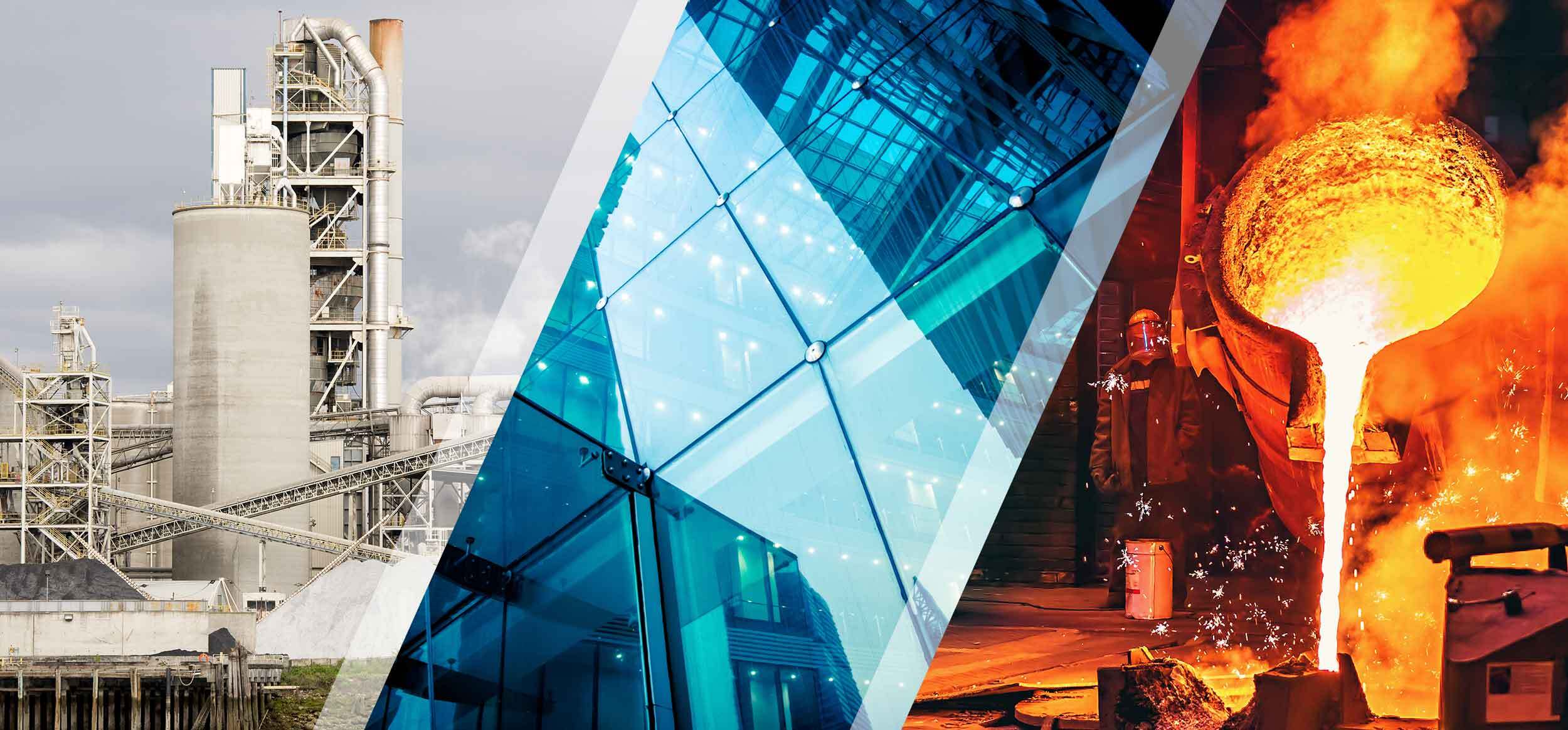Most advances in technology are driven by advances in materials. Major periods in human history are often distinguished by the key material of the time; think the Stone, Bronze and Iron Ages. Separating each of these periods is a fundamental discovery of how to transform a raw material through heat into useful end products. We continue to apply that principle when manufacturing foundational materials such as cement, glass and steel, all of which require immense heat for their formation.
The utility of the foundational materials is undoubted, forming most of the buildings and foundations of our cities. They’re so ubiquitous that we take them for granted, they meld into the background of our everyday lives thanks to their durability, low cost and the relative abundance of the necessary raw materials. However, producing cement, glass and steel comes at a significant cost to the environment. The cumulative emissions associated with these three essential building blocks of modern life amount to approximately 20-25% of global emissions. While our current period may be defined as the digital age, as computers have transformed how we process information, such a definition would neglect the transformation in how we process materials that is underway. We are well along the path of the energy transition, but we’re at the start of the materials transition, which could result in an age of zero-carbon materials.
Materials simulation
The imperative to reduce the environmental burden of foundational materials has led to a significant amount of research into alternative production strategies. In order to lower the carbon intensity of these materials, scientists have tried to use our first principles knowledge of atoms to understand the properties of materials which meet the requirements of industry, while improving sustainability. Applying these first principles requires supercomputers to solve quantum mechanical equations which simulate the behaviour of electrons. Such simulations have many advantages over experiments as they do not require a lab, can run numerous experiments simultaneously, and deepen fundamental understanding. Recent advances in drug discovery were aided by simulations which can identify key binding sites and relationships between structure and activity.
Accurate atomic-scale material simulation, however, requires a vast amount of computing power, using around half of the compute of UK government-funded supercomputers. On top of this, these calculations are approximations, so the results can be difficult to trust; their findings tend not to breach the confines of the research lab.
Given these limitations, we are not able to use atomic-scale material simulations for materials such as cement. As a computational chemist currently working on cement at Carbon Re, I am often surprised by the lack of fundamental understanding of how this crucial material is formed at an atomic level. The temperature in a cement kiln is comparable to lava, which is required for the characteristic material – alite – to form through the mixing of lime and silica. These high temperatures impart lots of energy to the atoms, to the point where their behaviour becomes nigh-on impossible to simulate. Another primary reason we lack atomic-level understanding of the reaction is that the resulting cement is a very disordered material, and scientists struggle to simulate these complex systems.
AI-guided material simulation
An exciting new approach to material simulation is to feed large datasets of materials simulation into machine learning algorithms. A sufficiently accurate model can then replace the original method which generated the data, avoiding high computing costs in subsequent calculations. The datasets must be representative of the material of interest, which has been a limitation of this approach for the foundational materials. If a material is disordered, like concrete, a machine-learning model would begin to require vast amounts of data to create a model that is up to scratch.
However, a deep learning method has recently been developed which makes this approach less data-hungry. Researchers at Harvard have developed an AI algorithm which takes great mathematical care to respect the laws of physics. In particular, they enforced that for a given arrangement of atoms, the learned model must behave in the same way if this atomic arrangement is shifted, mirrored, or rotated in space. Having these constraints built-in to make models more data efficient. The pyroprocessing models of cement production developed at Carbon Re are similarly grounded by scientific principles and, crucially, paired with industrial expertise. These models have allowed us to create digital twins for our customers to optimise their processes, reducing both costs and the carbon intensity of the desired products. Harnessing the potential of both process optimisation and material simulation will be crucial to fostering a zero-carbon future for the foundational materials that underpin our everyday lives.


